Temple Expiatori de la Sagrada Família
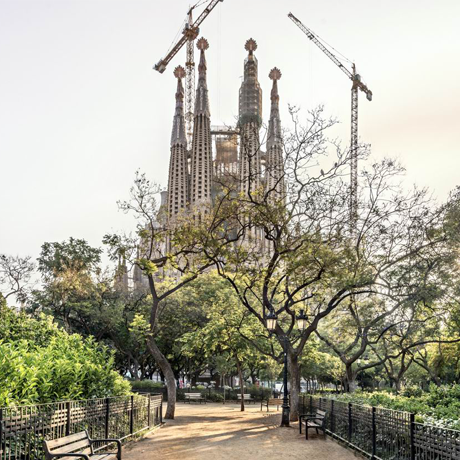
The architectural legacy which has earned Antoni Gaudí and, by extension, the city of Barcelona their greatest fame and prestige is the Expiatory Temple of the Sagrada Família. The grace and singularity of this building fundamentally reside in the radical transformation that the architect carried out on the initial Neo-Gothic design, turning it into a monumental church of gigantic dimensions.
The Sagrada Família is at once surprising, austere, unusual and exuberant. The layout of its spaces, its profuse sculptural decoration and its magnificence and solemnity make this structure a genuine Bible in stone. It is an as yet unfinished Bible, however, which is scheduled to be completed around the end of next decade.
THE BEGINNINGS: 1866-1883
The founding of the Spiritual Association of Devotees of Saint Joseph (1866) by Josep Maria Bocabella was the origin of the Sagrada Família project. In 1874 the association began to promote the construction of an expiatory church and, thanks to various donations, it purchased a plot of 12,800 sq.m. between the streets of Marina, Provença, Sardenya and Mallorca.
The cornerstone was laid on 19 March 1882, the feast of Saint Joseph, in a solemn ceremony presided over by the city’s bishop, Josep Urquinaona. The work then began, starting with the crypt beneath the apse according to the Neo-Gothic design by Francisco de Paula del Villar, the church’s first architect. He left the project shortly afterwards due to disagreements with the developers, and the commission was then given to Gaudí.

GAUDÍ REINVENTS THE PROJECT (1883-1892)
After taking on the project, Gaudí finished the crypt in six years and then began to build the apse. The work progressed quickly thanks to the good pace of incoming donations. Indeed, a certain very large anonymous donation was precisely responsible for leading the architect to reconsider his original plans. He then cast out the old Neo-Gothic project and proposed a new one that was more monumental and, above all, thoroughly innovative not only with respect to forms and structures but also in terms of building methods.
Gaudí‘s dream project consisted in a church of large dimensions with a Latin cross plan and very tall towers. The great symbolic significance of this design from the architectural and sculptural standpoints was that it sought to present a catechetical explanation of the teachings of the Gospels and the Church.
THE NATIVITY FAÇADE BLAZES THE WAY (1892-1914)
The Nativity Façade was the first to see the light, in 1892. As Gaudí himself said, “if instead of building this decorated, ornamented and turgid façade, I had started with the hard, bare and skeleton-like Passion Façade, people would have drawn back”. In 1894 the façade of the apse was finished, while the Rosary Doorway (one of the accesses to the Nativity cloister) was completed in 1899.
At the same time, on the southwest corner of the church, Gaudí built the Provisional Schools of the Sagrada Família (1909), conceived for the children of the workers of the Sagrada Família and of the neighbourhood. The following year, a model of the Nativity Façade was displayed in the Grand Palais de Paris on the occasion of an exhibition of Gaudí‘s work promoted by his friend and patron Eusebi Güell. In 1911 he designed the Passion Façade.
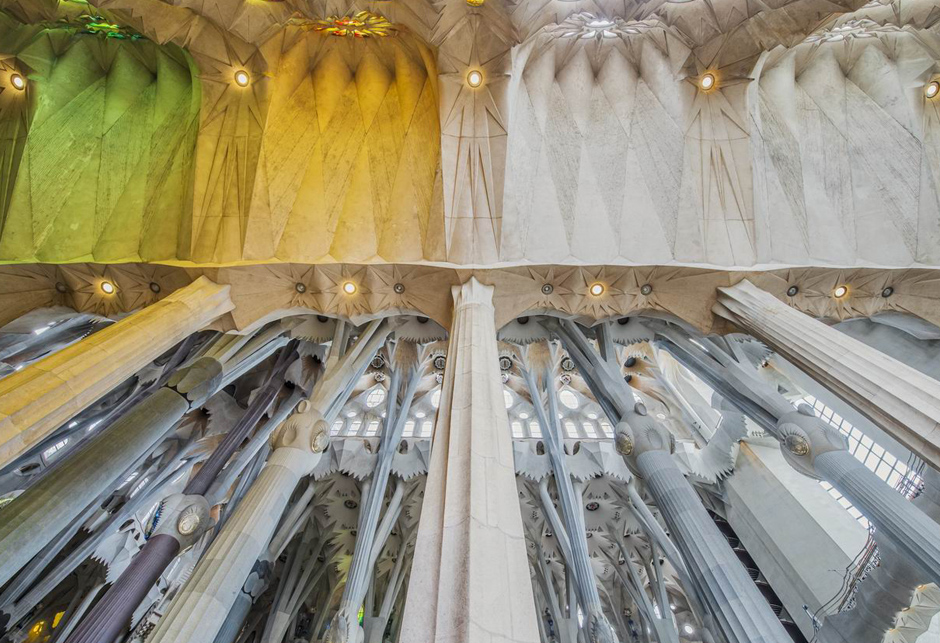
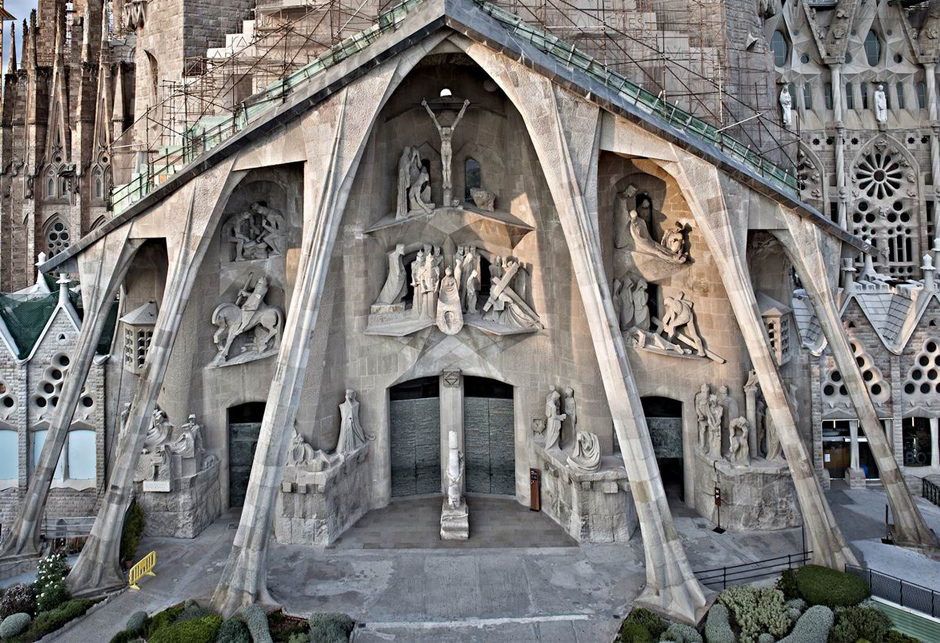
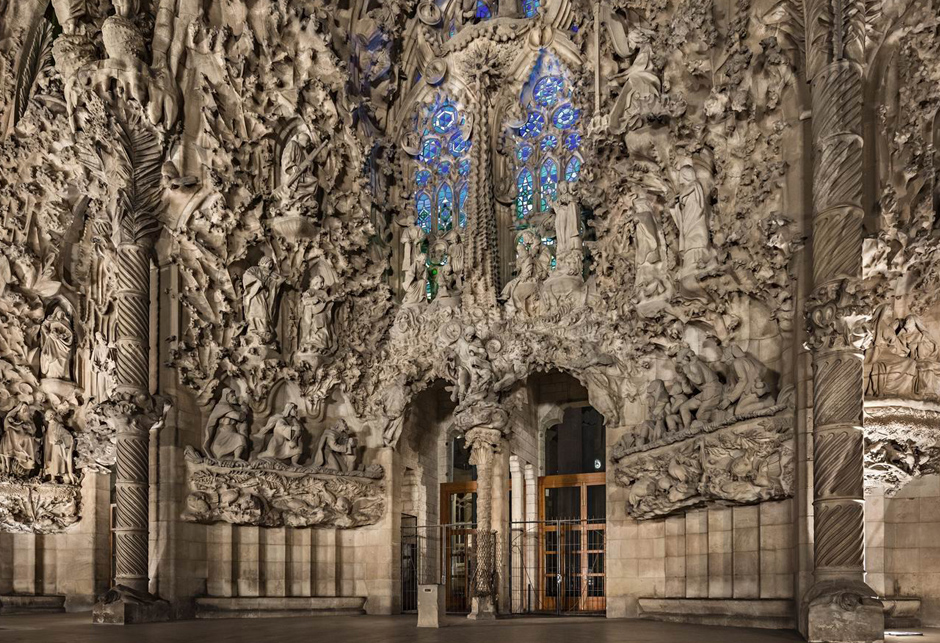
SOLE OCCUPATION (1914-1926)
As from 1914 Gaudí ceased to work on any other projects and the building of the Sagrada Família became his sole occupation. This explains why he did not carry out any other major works in the last years of his life. In fact, his involvement was so intense that he lived his last months right beside his workshop, in a space located next to the apse which was set up as a studio for scale models, designs and sculptures and as a photographic darkroom.
In 1923 he designed the final solution for the aisles and the roofs, although the work was progressing slowly at that time. The first bell tower, that of the Nativity Façade, which was dedicated to Saint Barnabas, rose to a height of 100 metres and was completed at the end of 1925. This is the only bell tower that Gaudí ever came to see completed since on 10 June 1926 he died from a tragic accident which had occurred three days earlier when he was run over by a tram. On 12 June he was buried in the Chapel of Our Lady of Mount Carmel in the crypt of the Sagrada Família, where his remains still rest today. Fortunately, during the last years of his work on the church Gaudí had a large group of architects, draughtsmen, sculptors and model makers under his direction to work on the project.
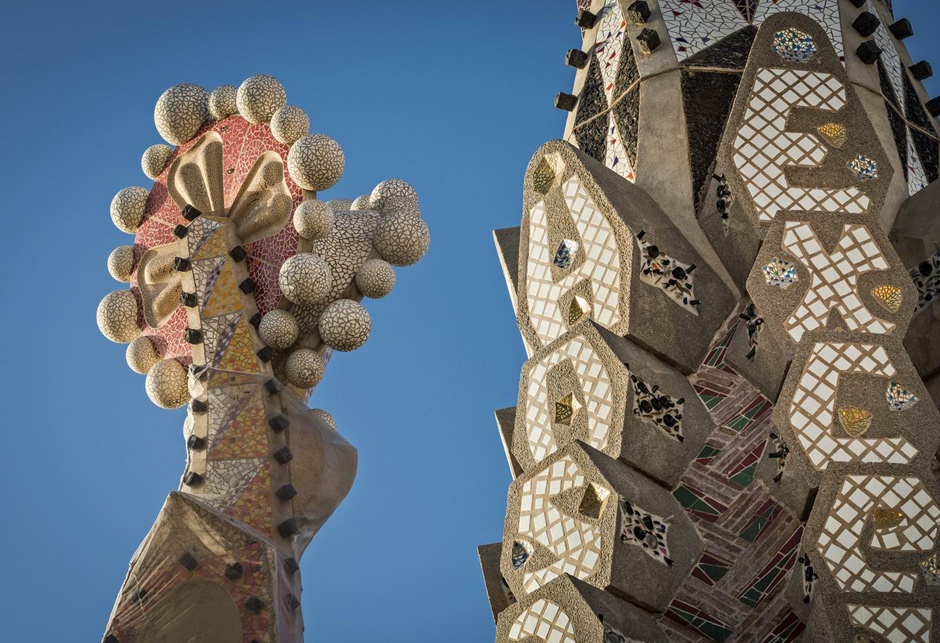
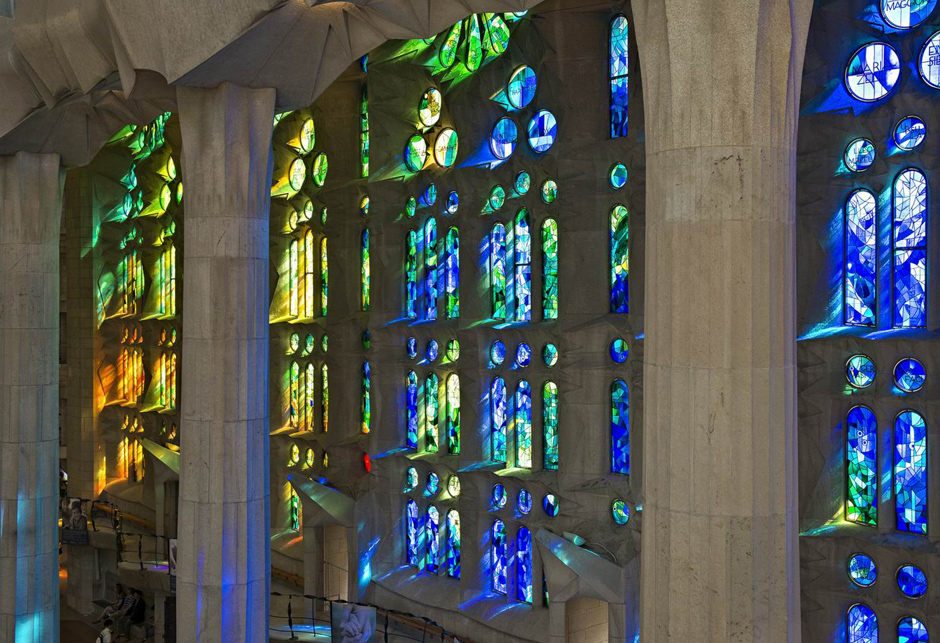
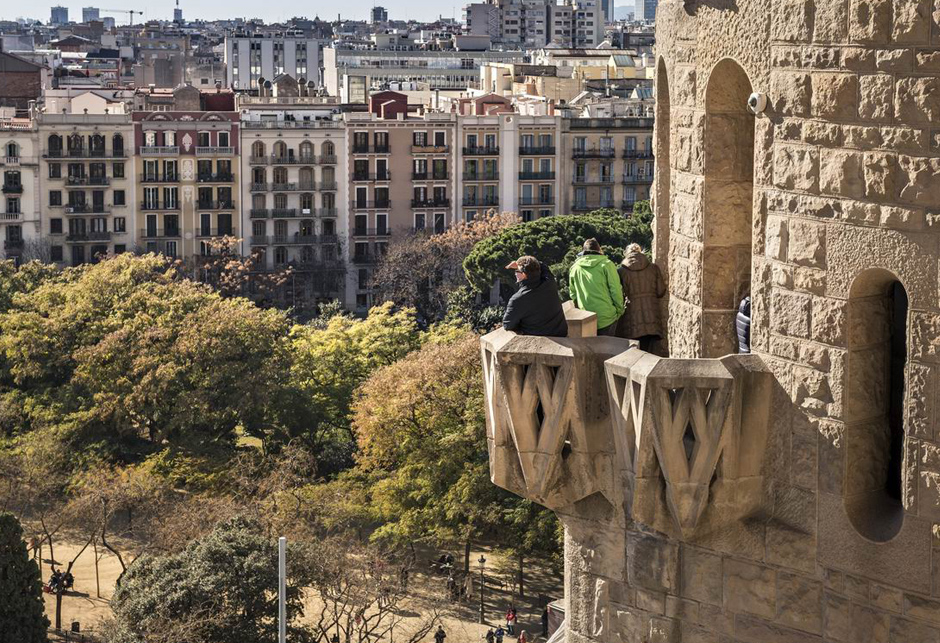
DESTRUCTION OF THE DRAWINGS AND SLOW RESURGENCE
On the death of Gaudí, his close assistant Domènec Sugrañes took over the management of the works until 1938. It was under his supervision that the bell towers of the Nativity Façade, the Faith Doorway and the central Cypress Tree were finished.
In July 1936, in response to the military uprising and the outbreak of the Spanish Civil War, revolutionaries burned the crypt and the Provisional Schools of the Sagrada Família, destroying the workshop as well. As a result, the drawings of the church and the original photographs were lost and part of the plaster scale models were destroyed. Despite these acts of vandalism, however, the construction of the church has never halted since Gaudí took charge of the project and the architect‘s intentions have always been followed.
After the Spanish Civil War, the burnt crypt was restored and many of the damaged models were mended thanks to the work of the architect Francesc de Paula Quintana. This made it possible to have the models on hand to continue the works according to the original plans. The work on the foundations of the Passion Façade began in 1954, on the basis of the many studies carried out by Gaudí. After the foundations, a crypt was built and there, in 1961, a museum was set up to explain to visitors the historical, technical, artistic and symbolic aspects of the church. The four bell towers of the Passion Façade were completed in 1976.
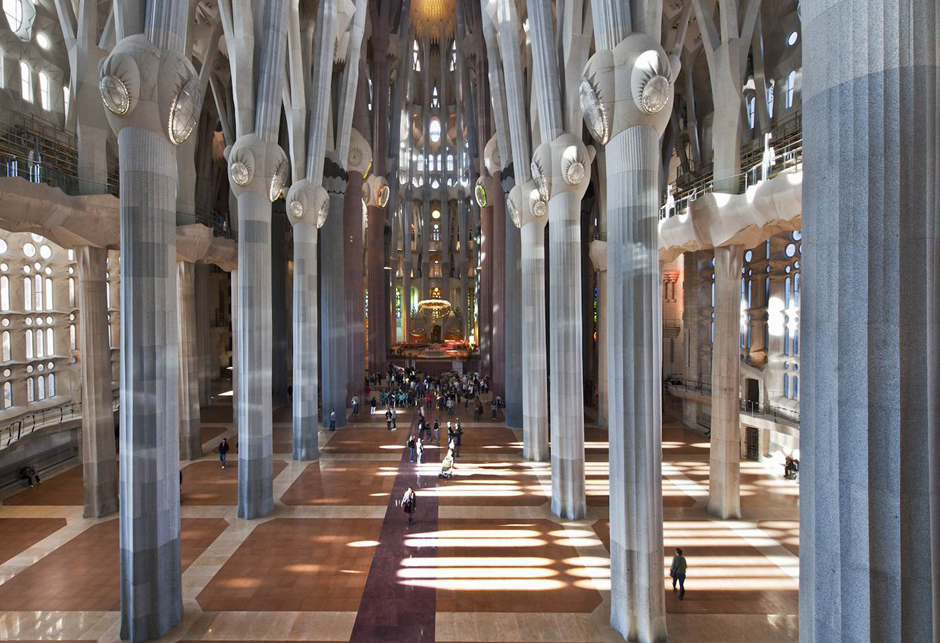
THE IMPETUS OF THE 21st CENTURY
At the turn of the 21st century, the work on the Sagrada Família began to advance at a new pace. Indeed, in the year 2000 the vaults of the central nave and of the transept were built and at the same time the work on the foundations of the Glory Façade began. Subsequently the main window of the Passion Façade was completed, placing in it a stained glass image of the Resurrection made by Joan Vila-Grau. The four columns in the centre of the transept were also finished.
In the midst of all this activity, the work and the figure of Gaudí were the subject of a special commemoration in 2002, when Barcelona City Council promoted the International Gaudí Year to mark his 150th birthday.
Between 2008 and 2010 the vaults of the transept and of the apse were finished, just in time to receive the visit of His Holiness Pope Benedict XVI for the dedication ceremony of the church.
THE COMPLETION OF THE WORKS, NOW IN VIEW
The main tasks right now and those that are scheduled for the years to come involve the building of the first sacristy (west side) and of the central towers. The building of the Glory Façade, the only one remaining to be erected, will complete the complex.
Once finished, the church will have five aisles surrounded by an ambulatory cloister, an apse with seven chapels on the north end and three façades on the other sides: the Nativity Façade, the Passion Façade and the Glory Façade, which is the main one. Each of them will include four bell towers with a parabolic profile representing the twelve apostles, and on top of the apse and the transept there will be another six towers, symbolising the four Evangelists, the Virgin Mary and Jesus. The Jesus Tower, on top of the dome, will be the highest, rising 170 metres in height.

OPENING HOURS
From November to February: 9:00-18:00 h
March and October: 9:00-19:00 h
From April to September: 9:00-20:00 h
1 and 6 January; 25 and 26 December: 9:00-14:00 h
The opening hours of the crypt are Monday to Saturday, 9:00-10:00 h and 18:00-21:00 h
Sundays and public holidays: 9:00-14:00 h and 18:00-21:00 h
HOW TO GET HERE
Bus: 19, 33, 34, 43, 44, 50, 51, B20, B24
Metro: L2 / L5 - Sagrada Família station
TOURIST TRANSPORT
Bus Turístic: Blue Route
Barcelona City Tour: East Route (Stop 11 - Sagrada Família)